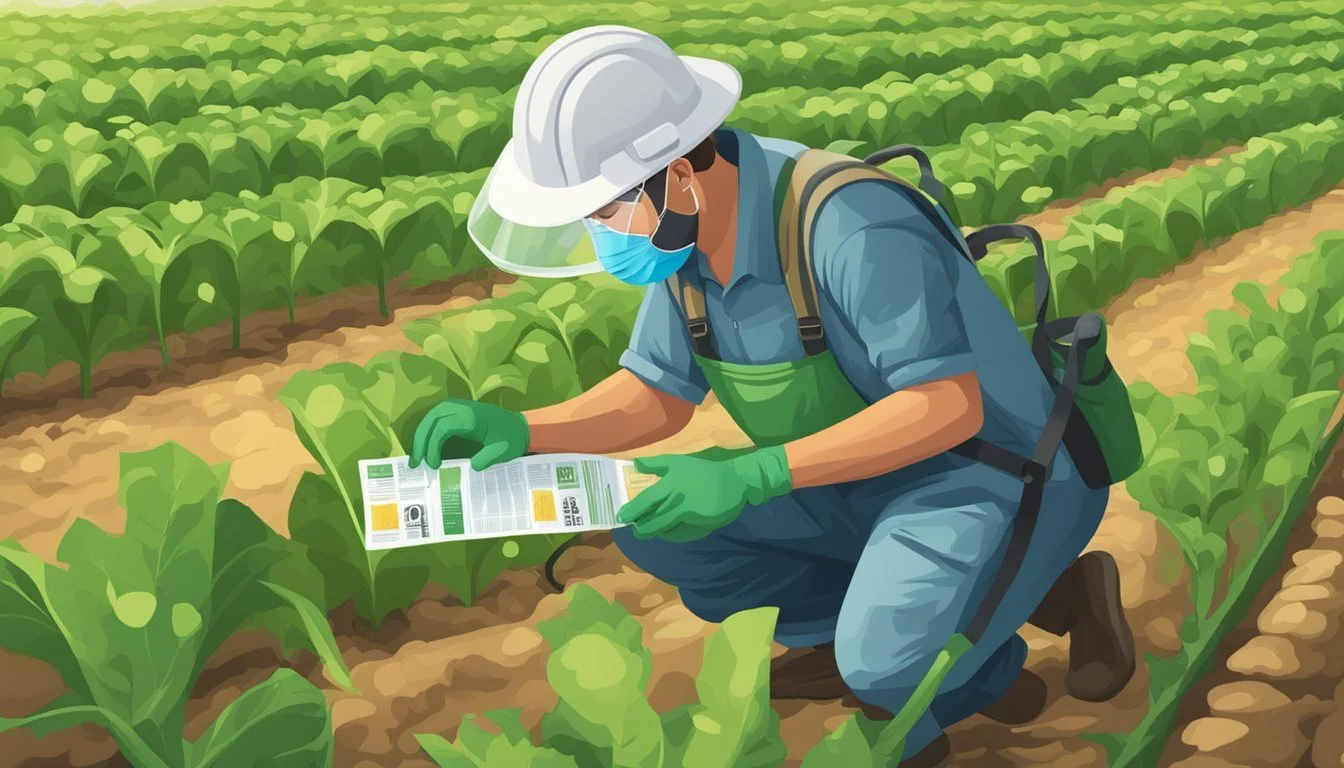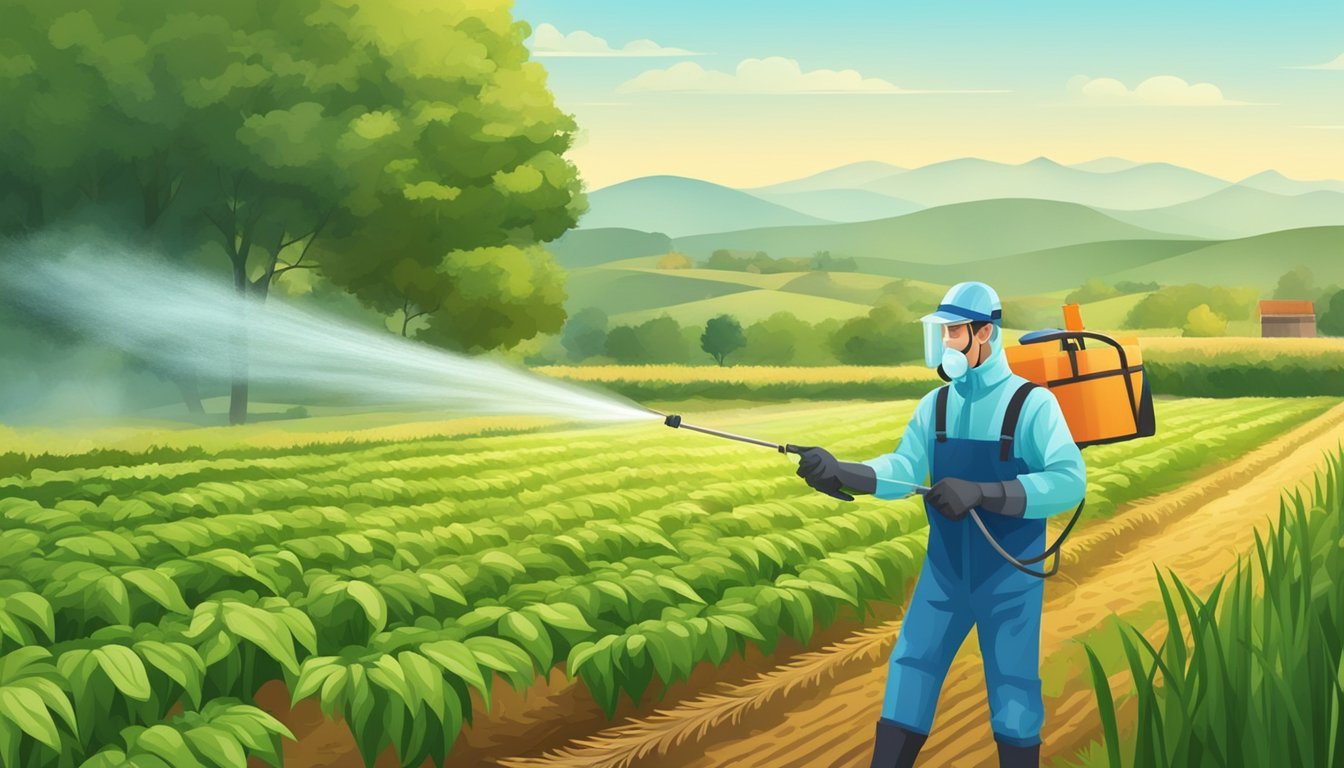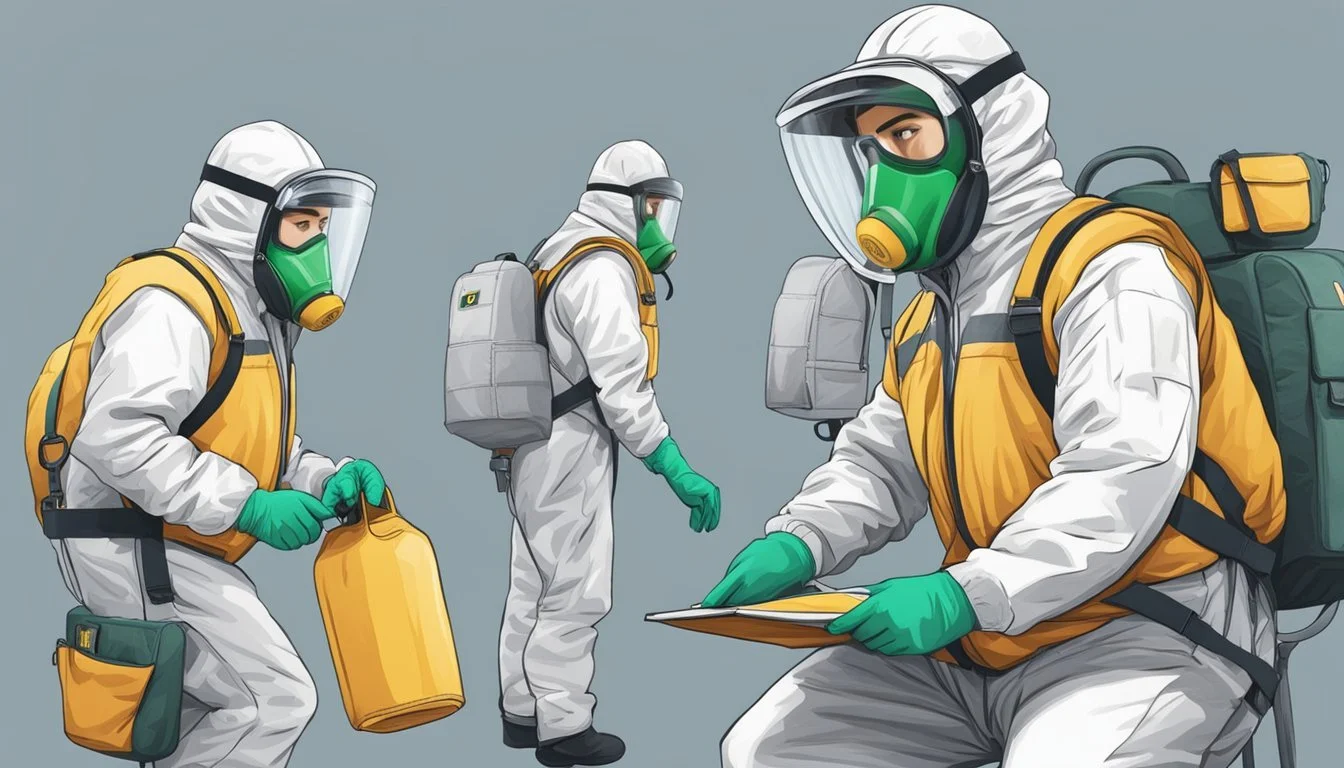Pesticide Safety and Regulations
Ensuring Responsible Use and Protection
Pesticides play a crucial role in modern agriculture, helping to protect crops from a variety of pests, including insects, fungi, and weeds. However, their use raises significant safety concerns due to the potential for harm to human health and the environment. Understanding and maintaining the balance between the benefits and risks associated with pesticide use is a complex challenge that involves rigorous regulatory frameworks and scientific assessment. The United States manages this challenge through agencies such as the Environmental Protection Agency (EPA), which ensures that pesticides are safe when used according to label directions.
Regulatory bodies are tasked with evaluating the safety and efficacy of pesticides before they are approved for use. To do this, they review scientific studies and data on the potential human health and environmental impacts of these substances. Once in the market, pesticides are subject to continuous monitoring and reevaluation to ensure ongoing protection of public health and the environment.
In addition to federal oversight, there is also an increasing public demand for transparency and safety in the use of pesticides. This reflects a broader societal understanding of the importance of sustainable agricultural practices and the necessity of minimizing chemical inputs. As science evolves, so too do the approaches to pesticide regulation, as regulators strive to protect those most vulnerable to potential pesticide exposure.
Overview of Pesticide Regulations
Pesticide regulations in the United States are stringent and multifaceted, involving a cooperative framework between federal and state agencies to ensure the safe use of pesticides. These regulations govern every aspect, from the registration of new pesticides to the enforcement of compliance.
Federal and State Regulatory Framework
The Environmental Protection Agency (EPA) serves as the primary federal body responsible for the regulation of pesticides under the Federal Insecticide, Fungicide, and Rodenticide Act (FIFRA). This federal-level regulation is bolstered by state agencies, which enforce pesticide laws within their respective jurisdictions. Each state's regulatory approach must, at a minimum, meet the EPA's requirements, but they have the authority to impose stricter regulations if deemed necessary.
The US Food and Drug Administration (FDA) also plays a role, primarily concerning the residue of pesticides on food under the Federal Food, Drug, and Cosmetic Act (FFDCA), ensuring that the levels of pesticide residues in foods meet safety standards.
Pesticide Registration and Approval Process
Before any pesticide can be sold or used in the U.S., it must undergo a rigorous pesticide registration process with the EPA. The registration is a scientific, legal, and administrative procedure through which the EPA examines:
The ingredients of the pesticide
The specific site or crop on which it is to be used
The amount, frequency, and timing of its use
Through this process, the EPA ensures that the pesticide poses no significant risk to human health or the environment when used according to its labeling. Pesticide reevaluation is a continuous process to ensure that, as science advances, pesticide products continue to meet stringent safety standards.
Compliance and Enforcement
The EPA and respective state agencies are charged with the enforcement of pesticide regulatory compliance. This includes periodic inspections and the review of records to ensure that registered pesticides are used according to label directions and restrictions. Non-compliance can result in penalties which may include fines or other legal action.
Enforcement is a critical component of the regulatory system as it ensures adherence to the safety protocols that protect workers, consumers, and the environment alike. The goal is to maintain high levels of pesticide safety through compliance with regulatory standards.
Pesticide Use and Safety in Agriculture
The imperative to maintain the safety of food and protect agricultural workers has led to stringent regulations surrounding the use of pesticides in agriculture. These regulations ensure that the application of pesticides on fruits and vegetables is done in a way that minimizes risk to both consumers and employees.
Proper Application and Handling
The proper application and handling of pesticides are critical to safeguard the health of pesticide applicators and the environment. Compliance with laws, such as those enforced in California, dictates that only trained and certified individuals may apply certain pesticides. These regulations are in place to mitigate the potential for pesticide residues to remain on fruits and vegetables after treatment. It is also essential that applicators use the correct equipment and follow label instructions to avoid excess use.
Worker Protection Standards
The Worker Protection Standard (WPS) is a set of regulations designed to reduce the risk of pesticide poisoning and injuries among agricultural workers. Employers are mandated to provide their employees with adequate training, protective equipment, and decontamination supplies. The WPS also requires employers to ensure workers avoid areas recently treated with pesticides and mandates restricted-entry intervals after pesticide application.
Safety Standards for Food Crops
To protect consumers, safety standards are enforced to limit pesticide residues on food crops. The Environmental Protection Agency (EPA) sets tolerances for the maximum residue levels allowed on fruits and vegetables sold in the United States. These standards are backed by rigorous scientific assessment to ensure that the food reaching consumers' tables is safe to eat. Compliance with these regulations is monitored through testing and if concerns arise regarding the safety of a pesticide, actions are taken which can include reducing application rates or banning specific uses.
Health and Environmental Considerations
Understanding the impact of pesticide use on health and the environment is critical. Specific attention must be focused on the toxicology and risk assessment of these substances, as well as the management of pesticide residues on food and in the environment.
Toxicology and Risk Assessment
The toxicological profile of a pesticide dictates its potential to cause harm. Risk assessment involves a detailed analysis of the likelihood and severity of adverse effects in exposed populations and ecosystems. For instance, carbamates are a class of pesticides known for their variable toxicity. They inhibit the activity of an important enzyme in the nervous system, which can lead to pesticide poisoning, especially if proper safety measures are not observed during their application and handling.
Studies scrutinize the chemical structure of pesticides and their breakdown products, metabolites, to understand the detailed mechanisms of toxicity. Residue levels in food, such as grains, are regularly monitored and compared against tolerance limits that are scientifically established to ensure safety.
Pesticide Residue Management
The management of pesticide residues seeks to prevent contamination of crops, water sources, and ecosystems. Regulatory bodies set residue levels for pesticides in food crops, maintaining that these levels fall within safety margins to prevent adverse effects on human health. Ongoing monitoring measures the residues found on produce, ensuring they do not exceed established tolerances.
Strict regulations govern the amount of residues permitted on food items, and compliance is mandatory. Contamination can occur at various stages, from the farm to the table, and toxic pesticides can persist in the environment long after their application. Consequently, residue management is essential in reducing exposure risks and safeguarding public health.
Resources and Support for Pesticide Handlers
Pesticide handlers have access to a wealth of resources designed to ensure their safety and compliance with regulations. This includes initiatives for education, certification, and outreach efforts providing materials in multiple languages.
Education and Certification Initiatives
The Occupational Pesticide Safety and Health initiative by the US EPA represents a cornerstone effort in securing the well-being of individuals working with pesticides. This initiative offers comprehensive pesticide safety information series which encompasses required certification and training to meet federal and state regulations. Certification programs are essential for handlers to not only abide by legal standards but also to maintain personal and environmental safety.
These programs ensure that handlers understand the proper storage, handling, and application of pesticides, bolstering the Worker Health and Safety Branch's commitment to uphold high safety standards. The essential safety information and best practices covered in these educational materials are critical in protecting handlers as they navigate the complexities of pesticide use.
Outreach and Multilingual Resources
Recognizing the diverse linguistic needs of pesticide handlers, the EPA has expanded its pesticide safety outreach to include resources in several languages, such as Spanish, Punjabi, Hmong, and English. This inclusive approach allows for a broader reach, ensuring that non-English speaking handlers are equally informed about the precautions and protocols necessary for safe pesticide use.
Accessible multilingual resources are provided through various formats, including printed materials, digital guides, and interactive online tools. For instance, guides such as "Protect Yourself from Pesticides" are available in Spanish to facilitate a better understanding for Spanish-speaking handlers. These resources play a crucial role in the educational landscape, equipping handlers with the knowledge to conduct their work safely.
Storage, Disposal, and Transport of Pesticides
When handling pesticides, adherence to regulations and guidelines ensures safety for individuals and the environment. Storage of pesticides, in particular, must meet containment requirements for agricultural chemicals. These stipulations involve pesticide containers of 500 gallons or larger, with the aim to prevent leaks and spills which can lead to contamination. Guidelines set forth by the US EPA dictate that containers should be robust, leak-proof, and clearly labeled to minimize risk.
Disposal of pesticides is another critical area with stringent regulations. Pesticides classified as hazardous waste require special disposal methods. Some pesticides fall under the Universal Waste regulations, which modify requirements for certain hazardous wastes and support state Clean Sweep programs designed for the safe disposal of these substances as per guidelines provided by the EPA.
Transport of pesticides demands careful planning and execution. Only permitted hazardous waste haulers are authorized to transport such waste to approved disposal sites. Regulations 40 CFR parts 261.3 and 261.32 apply to pesticides designated as "hazardous waste," thus ensuring these potent chemicals do not end up in the wrong places during transit.
For pesticide containers, the following apply:
Use containers that comply with EPA standards.
Ensure proper labeling as directed.
Upon disposal, containers must be cleaned adequately and disposed of in accordance with safety guidelines.
Pesticides should be transported in a way that prevents accidents and limits exposure. Those involved in the transport of pesticides must be educated and equipped to handle emergencies, as detailed in the resource provided by the University of Nebraska-Lincoln.
Public Participation and Information Access
Public participation in pesticide regulation is essential for maintaining safety and efficacy. The United States Environmental Protection Agency (US EPA) and other related agencies offer various avenues for the public to engage and access information.
Providing Feedback and Reporting Issues
Individuals are encouraged to provide feedback on pesticide-related concerns. Reporting issues is made accessible through the Pesticide Program Public Involvement Opportunities page. The site outlines the process for contacting the Office of Pesticide Programs and state lead agencies for any pesticide enforcement or concern. Additionally, the public can participate in the decision-making process, especially when new active ingredients are proposed or changes to existing pesticide use are considered. The Public Participation Process for Registration Actions page details that legal framework.
Information on latest developments can be found on the "news" section of agency websites, which keeps the public informed of recent policy shifts, safety news, and other critical updates affecting pesticide regulation.
Grants and Funding Opportunities
For those interested in furthering research or community initiatives related to pesticides, the US EPA provides grants and funding opportunities. Information detailing such opportunities can be located via agency's grants page, which elucidates the types of financial assistance available and the process for application. It is crucial for prospective applicants to frequently check for updates and deadlines to ensure they have the latest details for their submissions.
Legislation and Consumer Protection
Pesticide regulation in the United States is robust, involving several legislations that focus on consumer protection, food quality, and safety. Key among these is the Food Quality Protection Act (FQPA), which underpins the establishment of tolerances for pesticide residues. Ensuring the safety and quality of food products is a primary goal of these laws.
Food Quality Protection Act
The Food Quality Protection Act (FQPA) represents a major overhaul of the country's pesticide and food safety laws. Enacted in 1996, this act amended prior pesticide legislation to enforce stricter safety standards, particularly concerning exposure risks for infants and children. The act mandates that the Environmental Protection Agency (EPA) reassess all pesticide tolerances that existed prior to its passage and ensure that these tolerances are safe based on a reasonable certainty of no harm standard. More details on the FQPA's enforcement and objectives can be found through the EPA's summary of the act.
Establishment of Tolerances for Pesticide Residues
Tolerances for pesticide residues are legally enforced limits on the amount of a pesticide that can remain on food products. Under the FQPA, the EPA is given the authority to ensure these tolerances are safe for all consumers, with an added protective focus on infants and children's health. This involves rigorous risk assessment processes, considering all possible exposures to pesticides, including those in food, water, and residential settings. To learn more about tolerance levels and food quality, interested readers might explore the EPA's regulations on pesticides.
Frequently Asked Questions
The following subsections address specific concerns and provide clarity on pesticide safety and regulations, educating the reader on safe practices and compliance with laws.
What measures should individuals take to ensure safe handling of pesticides?
Individuals must wear protective gear, follow the label instructions, and utilise proper storage and disposal methods. The US EPA provides guidelines to protect people working with pesticides and promotes the safe use of these substances.
How has pesticide regulation evolved in the US over the years?
In the United States, pesticide regulation has developed to include comprehensive risk assessments and stringent approval processes. This evolution is detailed by the EPA's pesticide program, which strives to protect human health and the environment.
What are the specific pesticide safety regulations implemented in California?
California has a dedicated Pesticide Safety Information Series that outlines the safe use practices for pesticides specific to the state, and is managed by the California Department of Pesticide Regulation.
Which federal law is primarily responsible for regulating pesticides and herbicides?
The Federal Insecticide, Fungicide, and Rodenticide Act (FIFRA) is the key federal law governing the regulation of pesticides and herbicides. It stipulates that all pesticides must be registered with the EPA before sale or distribution.
What are the training requirements for pesticide application in accordance with state regulations?
Certification requirements and safety training for pesticide application vary by state. For example, safe use practices include proper education and adherence to local laws as enforced by state pesticide regulatory agencies.
How do pesticide safety practices differ between agricultural and non-agricultural settings?
Pesticide safety practices in agricultural settings often demand more extensive knowledge and precautions due to the larger scale of use. In contrast, non-agricultural applications might focus on residential or restricted uses, which can be addressed with corresponding levels of training and safety measures.






